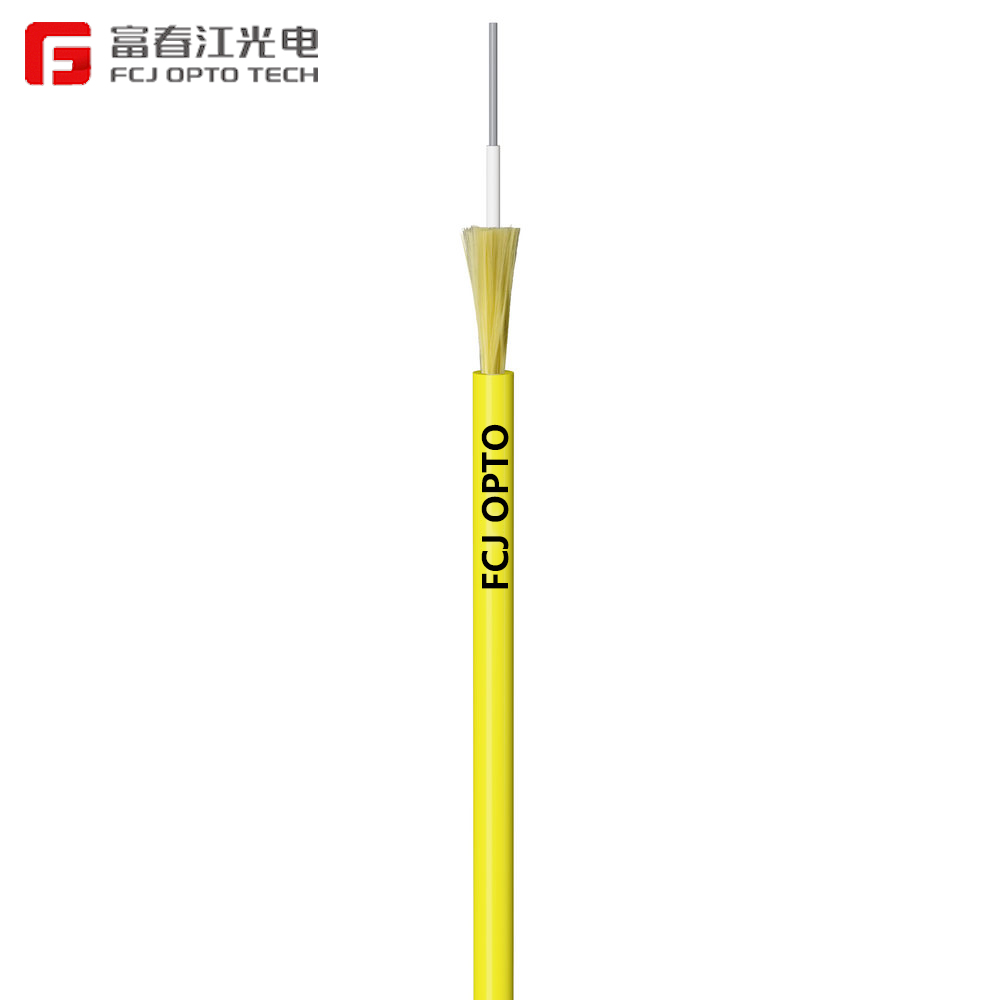Introduction to Indoor Fiber Optic Cables
As the demand for high-speed data transmission continues to grow, indoor fiber optic cables have become a crucial component in modern networking solutions. Unlike traditional copper cables, fiber optics rely on the transmission of light through glass or plastic fibers, offering faster and more reliable communication. This article examines how indoor fiber optic cables enhance signal transmission, providing insights into their advantages, mechanisms, and applications.
The Science Behind Fiber Optic Signal Transmission
Light-Based Data Transmission
Fiber optic cables transmit data using light pulses rather than electrical signals. These cables consist of a central glass core and a surrounding layer called cladding, both having distinct refractive indices. Light travels through the core, reflecting off the cladding, allowing for efficient transmission over long distances without significant loss. This process, known as total internal reflection, is the cornerstone of fiber optic technology, offering remarkable data speeds and reliability.
Advantages of Fiber Optic Cables Over Copper
Higher Bandwidth Capabilities
One of the most significant advantages of fiber optic cables is their ability to carry much more data than copper cables. While copper cables struggle to meet the increasing demand for data transfer, fiber optics can provide bandwidths exceeding 10 Gbps. This capacity is crucial for applications involving high-definition video streaming, large file transfers, and cloud computing.
Immunity to Electromagnetic Interference
Stable Performance in Complex Environments
Fiber optic cables are immune to electromagnetic interference (EMI), a common issue in environments filled with electronic devices and machinery. Unlike copper cables, which can be disrupted by EMI, fiber optics maintain stable and consistent performance. This characteristic makes them ideal for installations in industrial settings, data centers, and densely populated areas.
Compact and Lightweight Design Benefits
Efficient Space Utilization
Fiber optic cables are significantly smaller and lighter than their copper counterparts. This compact design facilitates easier installation, especially in networks with tight conduits or complex pathways. The reduced size also allows for more cables to be installed in a given space, maximizing infrastructure efficiency. For example, a single fiber optic cable can support hundreds of simultaneous phone calls or TV channels.
Long-Distance Data Transmission Capabilities
Extended Reach Without Signal Boosters
One of the standout features of fiber optic cables is their ability to transmit data over long distances without the need for signal boosters or repeaters. While copper cables are limited to a few hundred meters, fiber optics can carry data over several kilometers with minimal loss. This capability is particularly beneficial in large buildings or campus environments, where maintaining signal integrity is crucial.
Safety and Fire-Rated Cables
Compliance with Stringent Fire Codes
In commercial environments such as offices, hospitals, and schools, safety is a primary concern. Plenum-rated fiber optic cables are designed to meet strict fire safety standards. They feature flame-retardant, low-smoke jackets that prevent fire spread and reduce harmful emissions. This compliance ensures that fiber optic installations are not only efficient but also safe for occupants.
Impact on High-Speed Internet and Bandwidth
Enhancing Internet Connectivity
The introduction of fiber optic technology has revolutionized internet connectivity. With speeds approaching the speed of light, fiber optics significantly outperform copper connections. In regions like China, manufacturers and factories are leveraging this technology to provide robust internet infrastructure, capable of supporting high-demand applications such as 4K streaming and large-scale data processing.
Comparison with Other Internet Technologies
Fiber Optics vs. Cable and DSL
When compared to cable and DSL internet, fiber optics offer unsurpassed performance. Cable internet, often using coaxial cables, cannot match the speed and reliability of fiber optics, especially during peak usage times. Additionally, fiber optics provide symmetrical upload and download speeds, a feature rarely found in other technologies. For users requiring stable and high-speed connections, fiber optics remain the preferred choice.
Fcjoptic Provide Solutions
Fcjoptic specializes in delivering high-performance fiber optic solutions tailored to the needs of various industries. Whether for residential, commercial, or industrial use, our fiber optic products offer unmatched speed, reliability, and scalability. We collaborate with major manufacturers and factories in China to ensure that our products meet the highest quality standards. Contact us to discover how our fiber optic cables can enhance your network's performance and future-proof your connectivity infrastructure.

Post time: 2025-10-24 10:37:08